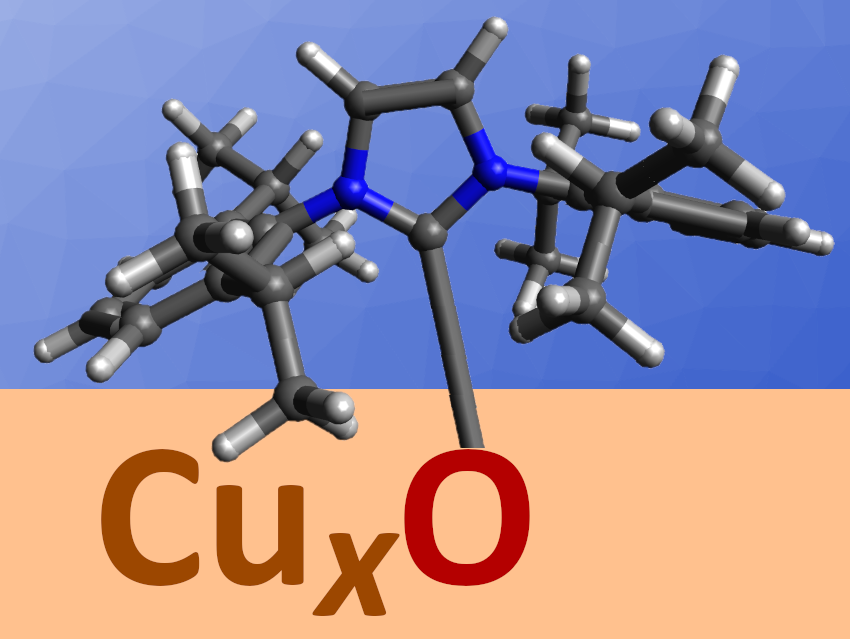The properties of surfaces can often be tuned by absorbed monolayers of molecules. This can be useful, e.g., in sensing and catalysis. For example, N-heterocyclic carbenes (NHCs) have been used on metal surfaces, where they form strong bonds with the metal atoms. Examples of NHCs on semiconductor surfaces are rarer, and the direct binding of NHCs to metal oxides had not been found so far. Metal oxide layers often spontaneously form on metal surfaces under ambient conditions, e.g., a copper oxide layer can form on copper surfaces.
Sergio Tosoni, Università di Milano-Bicocca, Milano, Italy, Markus Heyde, Fritz-Haber Institute of the Max-Planck Society, Berlin, Germany, Frank Glorius, University of Münster, Germany, and colleagues have investigated the adsorption of an NHC, i.e., 1,3-bis(2,6-diisopropylphenyl)imidazol-2-ylidene (IPr-NHC, pictured), on a copper oxide layer grown on a Cu(111) surface. The team used scanning tunneling microscopy (LT-STM), X-ray photoelectron spectroscopy (XPS), and density functional theory (DFT) calculations to understand the adsorption of IPr-NHC on CuxO.
The researchers found that IPr-NHC strongly interacts with the CuxO layer. It binds to the surface of the oxide layer via a covalent bond to an oxygen atom. According to the team, this is the first example of a direct covalent bond between NHCs and oxygen atoms from the oxide layer. The long-range order of the oxide layer is not disturbed by the adsorbed NHC. This indicates that NHCs could be useful for tuning the properties of metal oxide surfaces.
- Covalent Adsorption of N-Heterocyclic Carbenes on a Copper Oxide Surface,
Juan J. Navarro, Mowpriya Das, Sergio Tosoni, Felix Landwehr, Jared P. Bruce, Markus Heyde, Gianfranco Pacchioni, Frank Glorius, Beatriz Roldan Cuenya,
J. Am. Chem. Soc. 2022.
https://doi.org/10.1021/jacs.2c06335




